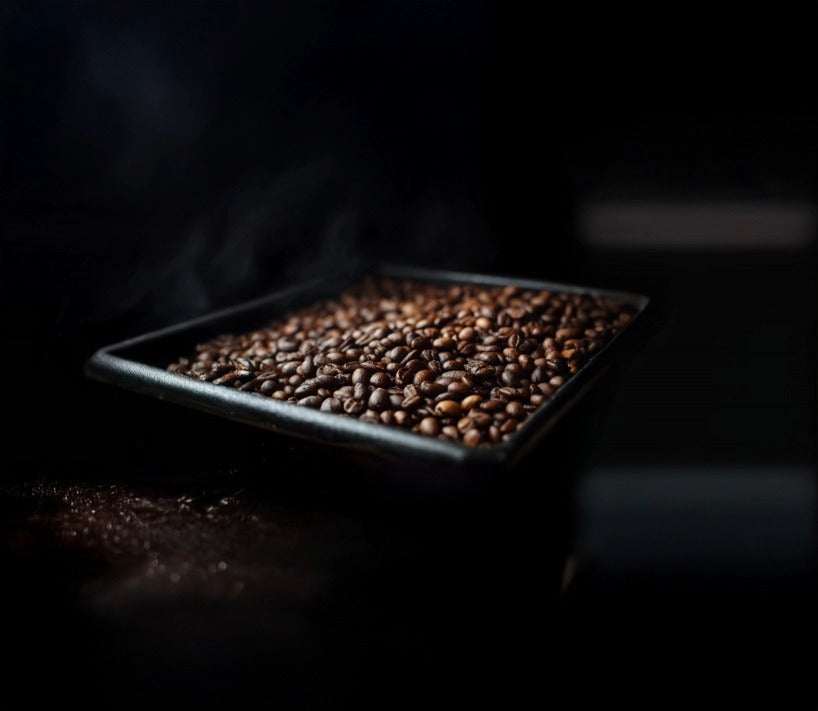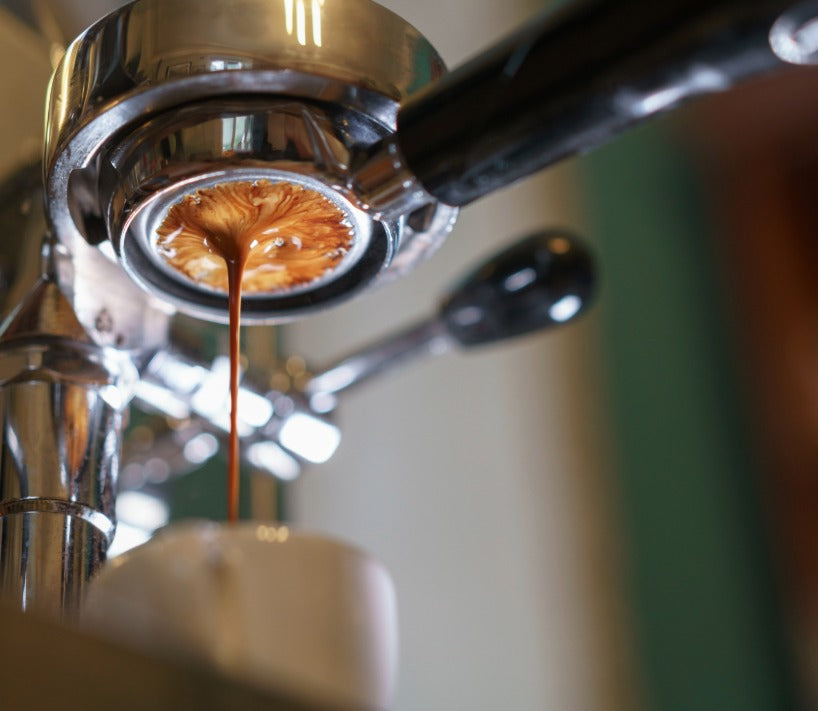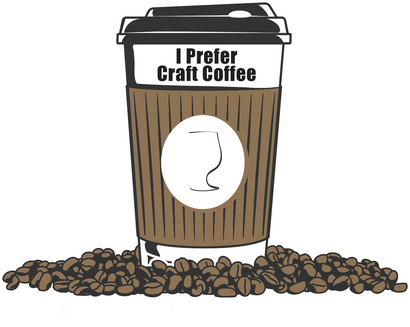Best small batch coffee uses clean water
May 09, 2025 4 min read
“Hard‐Knock Sips”: How Your Tap Water’s Toughness Shapes Coffee Flavor (and How to Tame It)
Why My “Best Cup Ever” Tasted Like Wet Cardboard
I’ll never forget the day I brewed a bright, floral Ethiopian—one of those best small batch coffee gems that usually sings a citrusy aria in my mug—only to be met with a flat, papery silence. My grinder setting hadn’t changed, the beans were fresh, and I’d even pre‑heated the brewer like a proud coffee nerd. Yet there I was, staring at a disappointing cup and wondering if my taste buds had taken the day off. They hadn’t; my best craft coffee at home had just collided with my city’s notoriously hard water. Cue dramatic music—and an emergency deep‑dive into water chemistry.
If you’ve ever wondered why a coffee that tastes spectacular at your favorite café goes dull in your kitchen, pull up a chair (and maybe a TDS meter). We’re about to unpack how water hardness and mineral content can make or break that precious brew.
Minerals: The Unsung Baristas in Every Kettle
1. Hard vs. Soft: A Quick Chemistry Refresher
-
Hard water = High levels of dissolved minerals, chiefly calcium (Ca²⁺) and magnesium (Mg²⁺).
-
Soft water = Lower mineral content, often featuring sodium ions if it’s been “softened” by a home system.
Calcium and magnesium aren’t villains; they’re flavor couriers. In the right concentrations, they help extract the complex sugars and acids that turn the best tasting whole bean coffee into a balanced cup. Too few minerals and your brew tastes empty—like tea made from hot rainwater. Too many and you risk chalky bitterness or a muted, “muddy” finish.
2. Flavor Extraction 101
Coffee’s solubles dissolve at different rates. Magnesium in particular latches onto chlorogenic acids (think fruity brightness), while calcium buddies up with lipids and sugars (hello body and sweetness). If the mineral party is over‑crowded, however, extraction goes from “lively conversation” to “angry mosh pit,” and the cup gets harsh. Soft water swings to the opposite extreme: under‑extracted, sour, and thin.
3. Espresso Exception: Pressure Changes the Rules
Pulling shots with best espresso beans? Hardness still matters, but high pressure accelerates extraction. Slightly higher mineral levels (100–150 ppm as CaCO₃) can actually boost crema and sweetness, whereas pour‑overs often sing at 70–90 ppm.
4. The Invisible Off‑Flavors
Remember that weird metallic edge or faint aroma of damp basement? Certain municipal supplies sneak in iron, copper, or sulfur compounds. No amount of perfectly roasted goodness—from the best coffee online stash you just ordered—will mask that funk.
5. SCA Guidelines: A Gold Cup Roadmap
The Specialty Coffee Association suggests:
-
Total Hardness: 50–175 ppm (ideal ~100 ppm)
-
Alkalinity: 40 ppm
-
pH: 6.5–7.5
Hit those markers and you’re giving your beans their best shot at stardom.
6. Testing, 1‑2‑3
-
Cheap & Cheerful: Aquarium drop‑test kits (~$10).
-
Nerd‑Approved: Digital TDS meter to gauge overall minerals.
-
Super‑Geeky: Lab water report + GH/KH titration.
It’s not overkill if you’re chasing café‑quality at home—trust me, the first sip of dialed‑in brew will validate your efforts faster than you can say “good coffee to drink black.”
. Fixing Problem Water
| Issue | Symptoms in Cup | Quick Fix | Long‑Term Fix |
|---|---|---|---|
| Excess Hardness (>200 ppm) | Chalky, bitter, muted | Bottled spring water balanced for coffee (look for ~100 ppm) | Reverse‑osmosis (RO) system plus mineral‑add‑back packets |
| Over‑Softened (sodium) | Flat, salty‑sweet, lacks brightness | Use bypass valve to blend raw water | Remineralize RO water with Mg/Ca blends |
| High Alkalinity (>120 ppm) | Metallic, dull acidity | Add a splash of distilled water to kettle | Carbon‑block filter + RO |
| Low Hardness (<40 ppm) | Sour, thin, grassy | Dissolve a pinch of Epsom salt + baking soda per liter | Third‑party mineral packets (e.g., SCA or Barista Hustle recipes) |
(Pro tip: When in doubt, start with a 2:1 mix of distilled water and your tap supply, then tweak.)
8. Sustainability & Cost
If you brew often, an RO system with a remineralization cartridge quickly pays for itself compared with endless cases of bottled water. Bonus: you control the exact recipe, guaranteeing consistency whether you’re dialing in a delicate Gesha or a bold Sumatra.
Brewing Bliss: Your Step‑by‑Step Mineral Master Plan
-
Test Your Tap
whip out that test kit. Jot down hardness, alkalinity, and pH. It’s like a coffee personality quiz for your pipes. -
Pick a Target
For drip or pour‑over, aim around 80–100 ppm hardness, 40 ppm alkalinity. Espresso? 100–150 ppm hardness can help. Post‑filter numbers matter more than raw tap stats. -
Choose a Method
-
Quick route: Grab balanced bottled water brands often used in cuppings.
-
DIY route: Start with distilled or RO, then add mineral packets (many roasters share recipes).
-
Tech route: Install an RO with a blending valve; fine‑tune like a home bartender.
-
-
Brew and Taste
Using the same dose, grind, and recipe, brew once with untreated tap water and once with your optimized water. Taste side‑by‑side. If the “good” cup makes the old one taste like sad bean soup, congratulations—science wins. -
Log the Details
Keep a notebook (or app) with water specs and tasting notes. Patterns emerge fast; soon you’ll know how a 20 ppm swing nudges sweetness or acidity. -
Share the Joy
Next time a friend asks “Where can I buy fresh coffee beans near me?” or complains their pricey beans taste mediocre, casually drop some mineral wisdom (or gift them a test kit—instant hero status and a perfect gift for coffee lover occasions).
Bringing It All Home
Mastering water chemistry may sound like over‑caffeinated wizardry, but it’s the hidden lever that transforms mere beans—even from the best specialty coffee online—into transcendent cups. Get it right, and that top coffee delivered yesterday will sparkle with notes you didn’t know existed. Get it wrong, and even the best coffee for non coffee drinkers might taste like burnt toast dunked in dishwater.
So here’s my caffeine‑fueled pep talk: test, tweak, and taste. Your morning ritual (and any lucky guests) will thank you with every aromatic sip. And if you ever find yourself doubting the payoff, brew two cups side‑by‑side—one with dialed‑in minerals and one with plain tap. The difference is like hearing your favorite song on vinyl after years of scratchy radio. Once you hear (or rather, taste) that clarity, there’s no going back.
May your kettles stay calibrated, your taste buds stay curious, and your water forever play nice with those glorious beans. Cheers to chasing the perfect cup—one mineral at a time!
Also in Best Coffee To Buy Online Education

Best Gift For Coffee Lovers: Why Beans Beat Gadgets
December 17, 2025 4 min read
Here’s the truth: the best tasting craft coffee at home doesn’t come from gear.
It comes from fresh, high-scoring specialty coffee roasted by someone who cares more about your morning cup than their own.

Best Espresso Beans Online: Why FullCity+ Makes Better Espresso
December 16, 2025 4 min read
Best Espresso Beans Online: Why FullCity+ Makes Better Espresso
Learn why medium/dark FullCity+ roasts create sweeter, richer espresso shots at home. The best tasting espresso at home starts with coffee that's roasted just for you and q-graded 85+ for quality!

